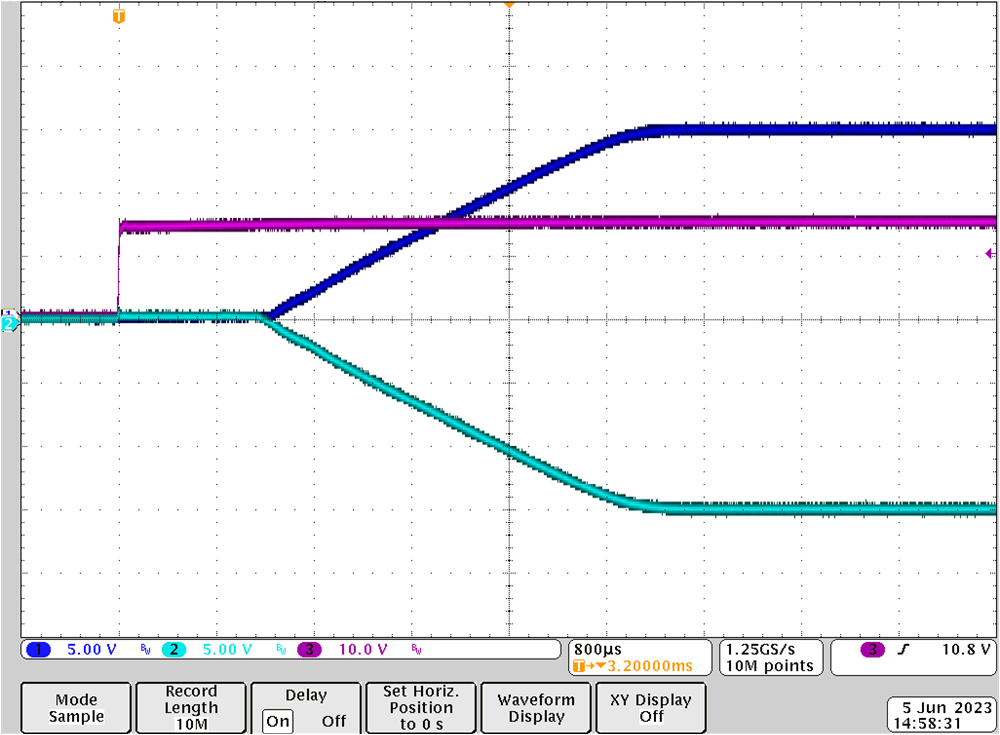SNVAA84 October 2023 LMR36506
3.1 Start-up Behavior
Figure 3-12 shows the typical start-up behavior of fly-buck-boost configuration where the signals on the positive and negative rails ramp-up symmetrically on the supply of VIN. The pink line indicates the input voltage of 16 V and the dark and light-blue lines are the positive and negative rail signals ramping up to ±15 V symmetrically.
 Figure 3-1 Start-up Behavior of
Fly-Buck-Boost Topology
Figure 3-1 Start-up Behavior of
Fly-Buck-Boost Topology